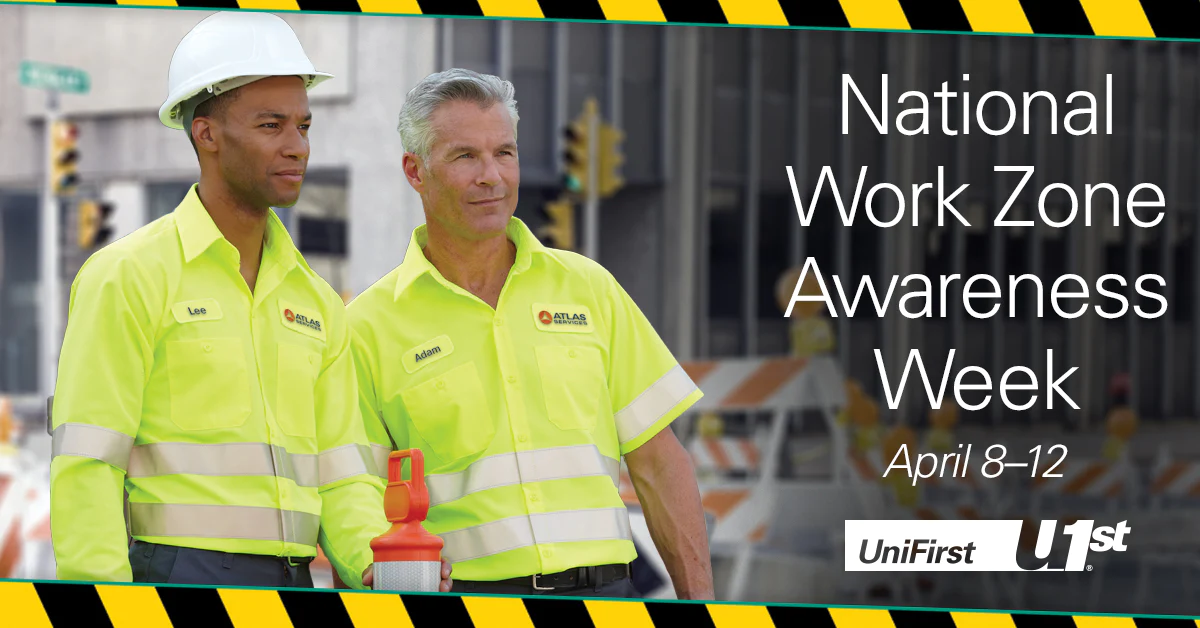High Visibility Clothing helps protect workers in work zones.
It’s National Work Zone Awareness Week—April 8–12. Since 2000, the Federal Highway Administration (FHWA) and its partners have sponsored National Work Zone Awareness Week, an annual spring campaign held at the start of construction season to encourage safe driving through highway work zones. This year’s theme is “Drive Like You Work Here” and reinforces the message that drivers must use extra caution in work zones to help keep everyone safe.
A work zone is an area where road construction, maintenance or utility work takes place. Safety for crews in work zones, as well as the vehicles that travel through them, is critically important. Drivers must be on watch for workers coming in and out of work zones, including flaggers who may be directing changing traffic patterns.
Work zones play a key role in maintaining and upgrading our nation’s roadways. Unfortunately, daily changes in traffic patterns, narrowed rights-of-way, and other construction activities often create a combination of factors resulting in crashes, injuries, and fatalities. These crashes also cause excessive delays, especially given the constrained driving environment. According to the FHWA, on average, over 700 fatalities occur in work zones each year.
Speed is a contributing factor in almost 29 percent of fatal work zone crashes, according to FHWA statistics. Speeding endangers everyone on the road, particularly in work zones since speeding drivers are less likely to respond to traffic control devices or safely navigate the roadway conditions, lane closures, lane shifts, rough surfaces, and other conditions that are common in work zones.
Here are some safety tips for driving through work zones to help keep everyone safe:
- Plan ahead. Work zones account for an estimated 10 percent of overall congestion and nearly 24 percent of unexpected freeway delays. Expect delays, plan for them, and leave early to reach destinations on time. Or, avoid work zones altogether by using alternate routes.
- Obey road crews and signs. When approaching a work zone, watch for cones, barrels, signs, large vehicles, or workers in brightly colored high-visibility clothing who typically direct people where to go.
- Slow down. Look for signs indicating the speed limit through the work zone. Keep a safe distance from the vehicle ahead of you and follow the posted speed limit.
- Move over. Most state move-over laws apply when passing work crews and official vehicles parked on the shoulder with flashing warning lights.
- Avoid distractions. Keep your eyes on the road and off your phone.
- Watch for sudden stoppages. In 2017, 25 percent of fatal work zone crashes involved rear-end collisions.
- Watch for large vehicles. Don’t make sudden lane changes in front of trucks that are trying to slow down. In 2017, 50 percent of fatal work zone crashes involving large trucks or buses occurred on rural roadways. Between 2013 and 2017, fatal work zone crashes involving large trucks increased by 43 percent.
Learn more about High Visibility clothing uniform rental programs.
Need High Visibility Clothing for your team? View our online rental catalog.
For more information about National Work Zone Awareness Week, visit:
Federal Highway Administration. “National Work Zone Awareness Week.”
The National Work Zone Safety Information Clearinghouse, “National Work Zone Awareness Week.”

